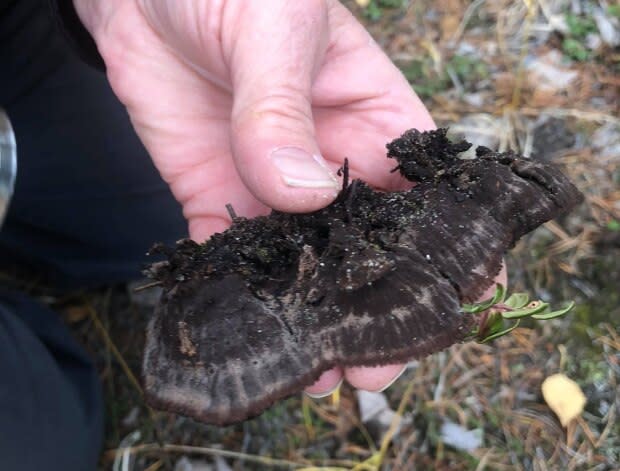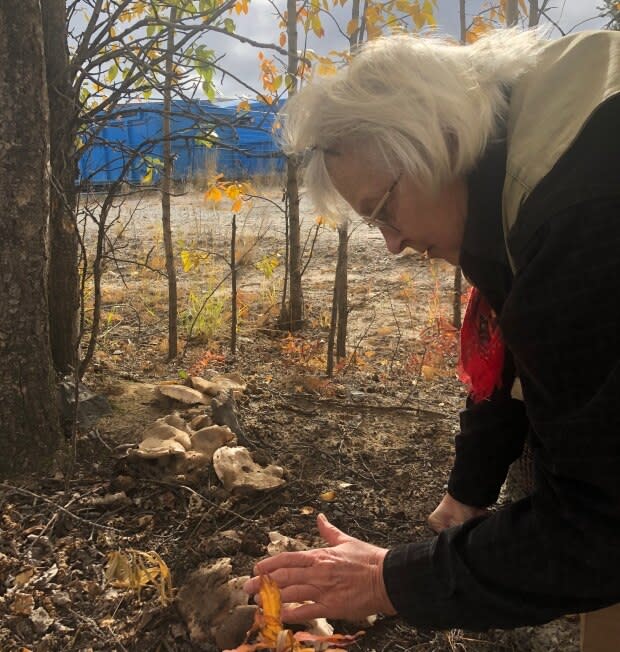Mushrooms abound in N.W.T. thanks to rainy summer
Rain put a damper on some people's summer plans this year, but for Velma Sterenberg, the rain just means more wild mushrooms.
Sterenberg is a self-described enthusiastic amateur mycologist.
She says she's been picking mushrooms since she was four years old, and comes from a culture of mushroom picking.
Some regions in the N.W.T. saw record-setting rain this summer. In Yellowknife, it was the third-rainiest summer in the weather records. For Sterenberg, that means more mushrooms.
In the Yellowknife region, she says there have been more of one species of mushroom, and several species that appear to be in decline. Sterenberg says the Suillus tomentosus, known as the Blue-staining Slippery Jack, is especially abundant this year.
"When you see missing species and one taking over, it signifies something is happening," she said.
"It's hard to say what exactly, or whether it's good or bad."

In the South Slave region, record rainfalls have also led to increased numbers of mushrooms, according to Bruce Green of Hay River.
He is a retired teacher and biologist and says this is one of the best years for mushrooms that he can recall.
Green says there are always millions of mushroom spores in the air and the soil, and conditions have to be favourable for them to thrive. Those conditions include adequate moisture and mild temperatures.
He says that although there are a lot of mushrooms this year, you have to be very careful when foraging.
"Substantial portions of mushrooms are poisonous, and some are very deadly. You have to be very careful if you are to harvest," Green said.

Sterenberg agrees, and cautions new foragers about eating new species.
Morels are a well-known and popular type of mushroom in the region for picking, cooking and eating, since they grow in the remains of forest fires. But "false morels" are poisonous and can be lethal, according to a Northwest Territories Department of Insudstry, Tourism and Investment's online morel guide. And the false species can grow right beside "true" morels.
Another "critical" reminder from the department is to avoid harvesting mushrooms near exploration and mining sites, or gravel roads and high-dust areas. Mushrooms can accumulate toxic heavy metals and other contaminants, like arsenic.
The department advises pickers to consult field guide books before eating any mushroom.
Animals love mushrooms
Some animals are also happy about the increase in mushrooms this year.
Squirrels are harvesters of mushrooms, and their bounty can often be found drying in trees, left there by the crafty rodent.
Sterenberg says she has seen all kinds of animals eating mushrooms.
"I am not a hunter, but I have found evidence of caribou, moose, bear, wolves, fox and different kinds of birds eating mushrooms," she said.
"Ravens in particular will dig certain species of mushrooms out of the ground."
Not all animals are clever harvesters of mushrooms, though.
Mushrooms can be toxic to pets, like cats and dogs. Since mushrooms often grow on walking trails, dogs are at a higher risk of eating mushrooms and becoming sick.
What should you do if your furry companion eats a wild mushroom? Get it to a veterinarian as soon as possible, or call poison control, Sterenberg says.

